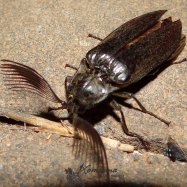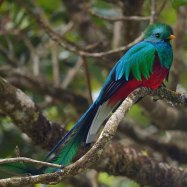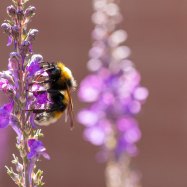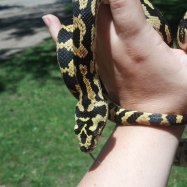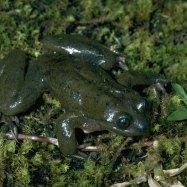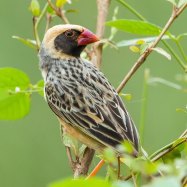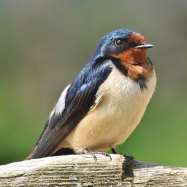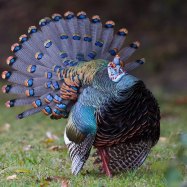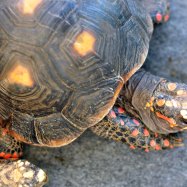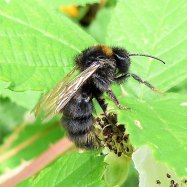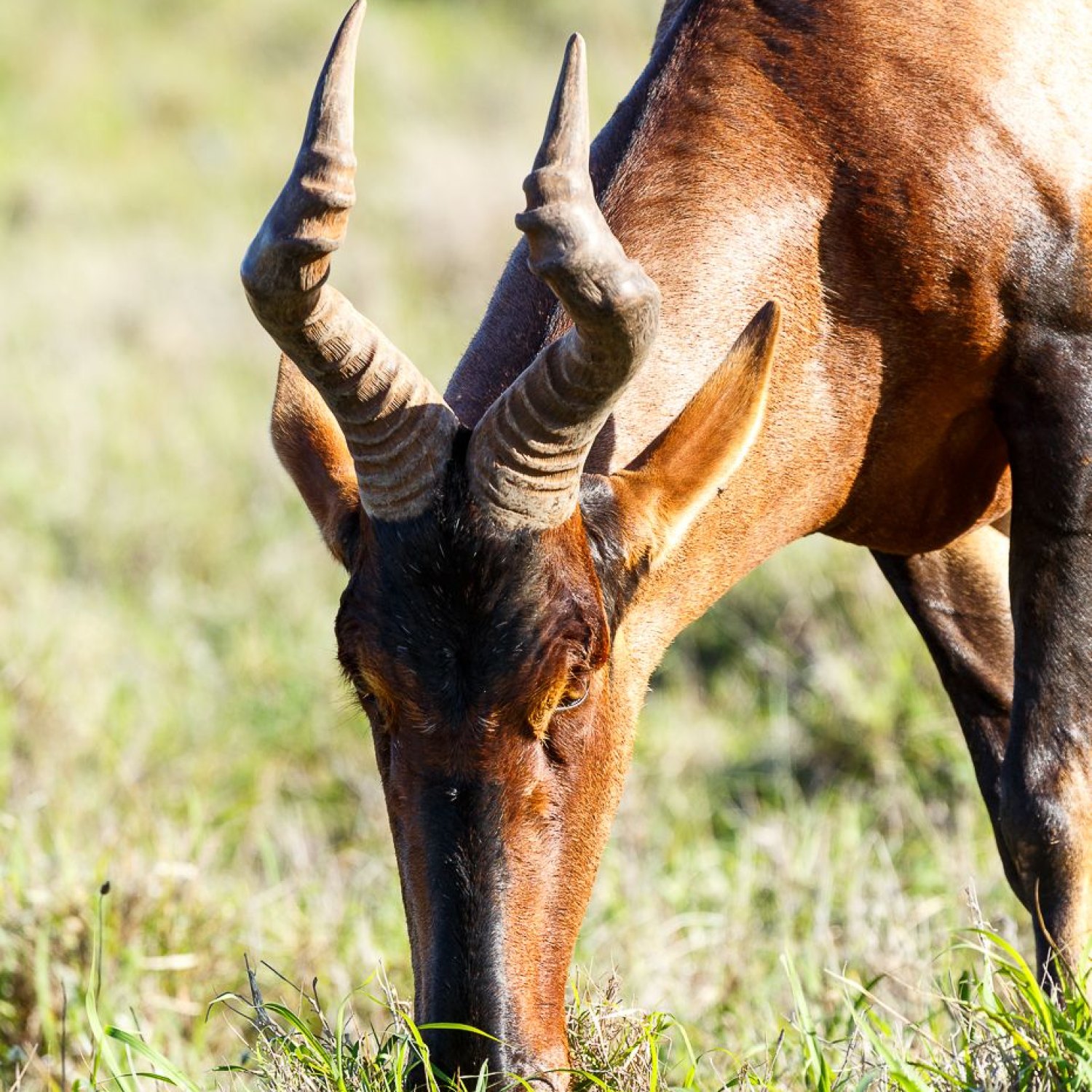
Hartebeest
140 to 200 centimeters
The hartebeest is a magnificent animal found in the grasslands and open woodlands. Known for its large and robust body, it can reach lengths of 140 to 200 centimeters. Belonging to the Bovidae family, it is a popular sight among wildlife enthusiasts. #animals #hartebeest #grasslands #wildlife
Animal Details Summary:
Common Name: Hartebeest
Kingdom: Animalia
Habitat: Savannah grasslands
The Beautiful and Mighty Hartebeest of Africa
The African continent is home to some of the most remarkable wildlife in the world. From the majestic elephants to the fierce lions, there is no shortage of stunning animals in Africa. Among these, the Hartebeest stands out as a unique and fascinating creature.Scientifically known as Alcelaphus buselaphus, the Hartebeest is a large antelope found in the savannah grasslands of Sub-Saharan Africa Hartebeest. It belongs to the Animalia kingdom, Chordata phylum, Mammalia class, and Artiodactyla order. Its closest relatives are the wildebeests and topi, all of which are members of the Bovidae family.
With its striking appearance and impressive features, the Hartebeest has captured the fascination and admiration of many animal lovers. In this article, we will take a closer look at this magnificent creature, its habitat, feeding method, distribution, and other interesting facts.
Habitat and Distribution
The Hartebeest is native to the grasslands and open woodlands of Sub-Saharan Africa. It can be found in various countries such as Tanzania, Kenya, Uganda, Zambia, and South Africa, to name a few. Its preferred habitat is the savannah grasslands, where it can graze and roam freely.Unlike other antelope species, the Hartebeest is not a migratory animal. It prefers to stay in its territory, which can range from a few square kilometers to a hundred square kilometers, depending on the availability of food and water Highland Cattle.
Appearance and Body Shape
The Hartebeest is a large and robust animal, with a height ranging from 120 to 140 centimeters at the shoulder. Its body shape is distinctive, with a sloping back, long face, and elongated head. The front legs are longer and sturdier than the back legs, giving the Hartebeest a loping gait.One of the most notable features of the Hartebeest is its reddish-brown to pale sandy coloration, giving it excellent camouflage in its grassland habitat. It has a white blaze on its forehead, which gives it an almost regal appearance. Both males and females have horns that are long, curved, and ridged, with the males having more massive and more prominent horns than the females.
The Hartebeest has an excellent sense of smell, which it uses to detect predators and other danger. Its eyes are located on the sides of its head, giving it a broad field of vision. This helps it spot potential threats while grazing on the open savannah.
Feeding Method and Behavior
As a herbivorous animal, the Hartebeest feeds on a variety of grasses, herbs, shrubs, and leaves. It has a specialized digestive system to digest tough and fibrous vegetation, making it a vital contributor to the ecosystem.The Hartebeest is a diurnal animal, meaning it is active during the day. It spends most of its time grazing and can cover long distances in search of food and water. It is a social animal, forming groups of up to 15 individuals, consisting of both males and females. Within the group, there is a dominant male who is responsible for protecting the herd from predators.
During the breeding season, which occurs between January and March, males compete for dominance and the right to mate with females. This competition often involves ritualized displays and clashes of their horns, but rarely results in serious injuries.
The Importance of Hartebeest Conservation
The Hartebeest is an essential contributor to the ecosystem in which it inhabits. Its grazing behavior helps keep vegetation in check, which prevents overgrowth and wildfires. As a prey animal, it also plays a crucial role in the food chain, providing a food source for predators such as lions, cheetahs, and hyenas.However, despite its importance and iconic status, the Hartebeest is facing a significant threat to its survival. Human activities such as poaching, habitat destruction, and competition with domestic livestock are the main causes of the Hartebeest's decline in population.
To combat these threats and ensure the Hartebeest's survival, conservation efforts have been put in place in various countries across Africa. These initiatives include the creation of protected areas, anti-poaching efforts, and community education programs. Through these efforts, the Hartebeest population is slowly recovering and is now listed as "Least Concern" on the IUCN Red List.
Interactions with Humans
Throughout history, the Hartebeest has played a significant role in African culture and has been an important source of food and materials for local communities. Its meat is lean and nutritious, and its hide is used to make traditional clothing and weapons.Today, the Hartebeest is also an important economic asset for many African countries, as it is a popular tourist attraction and a source of revenue through hunting permits. It is also a valuable species for scientific research and education, providing insight into the ecology and behavior of wild animals.
However, human interactions with the Hartebeest have not always been positive. In the past, the Hartebeest was hunted for its meat and leather, leading to a decline in its population. Today, it is still hunted for sport, which can have a negative impact on the species if not regulated properly.
The Future of the Hartebeest
The Hartebeest is a remarkable animal, both in its physical appearance and its contribution to the African ecosystem. It is a symbol of resilience and survival, facing numerous challenges but still thriving in its natural habitat.As we continue to learn more about these fascinating creatures, it is essential that we also take responsibility in preserving their existence. Through continued conservation efforts and responsible human interactions, we can ensure a future where the Hartebeest continues to roam freely on the African savannah and capture the hearts of many for generations to come.

Hartebeest
Animal Details Hartebeest - Scientific Name: Alcelaphus buselaphus
- Category: Animals H
- Scientific Name: Alcelaphus buselaphus
- Common Name: Hartebeest
- Kingdom: Animalia
- Phylum: Chordata
- Class: Mammalia
- Order: Artiodactyla
- Family: Bovidae
- Habitat: Savannah grasslands
- Feeding Method: Herbivorous
- Geographical Distribution: Sub-Saharan Africa
- Country of Origin: Various countries in Africa
- Location: Grasslands and open woodlands
- Animal Coloration: Reddish-brown to pale sandy color
- Body Shape: Large and robust
- Length: 140 to 200 centimeters
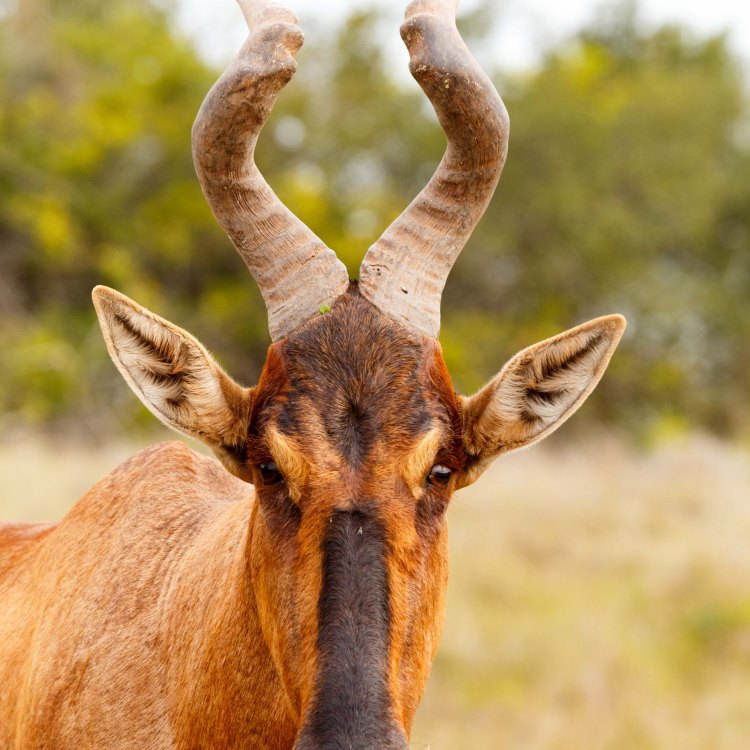
Hartebeest
- Adult Size: 115 to 145 centimeters at the shoulder
- Average Lifespan: 12 to 15 years
- Reproduction: Sexual
- Reproductive Behavior: Polygynous (males mate with multiple females)
- Sound or Call: Loud, snorting alarm call
- Migration Pattern: Seasonal migration in search of food and water
- Social Groups: Large herds
- Behavior: Active during the day (diurnal)
- Threats: Habitat loss, hunting, and competition with domestic livestock
- Conservation Status: Least Concern
- Impact on Ecosystem: Important grazers and dispersers of seeds
- Human Use: Hunting and tourism
- Distinctive Features: Long, narrow face with elongated, ringed horns
- Interesting Facts: Fast runners, capable of reaching speeds up to 55 kilometers per hour
- Predator: Lions, hyenas, and wild dogs
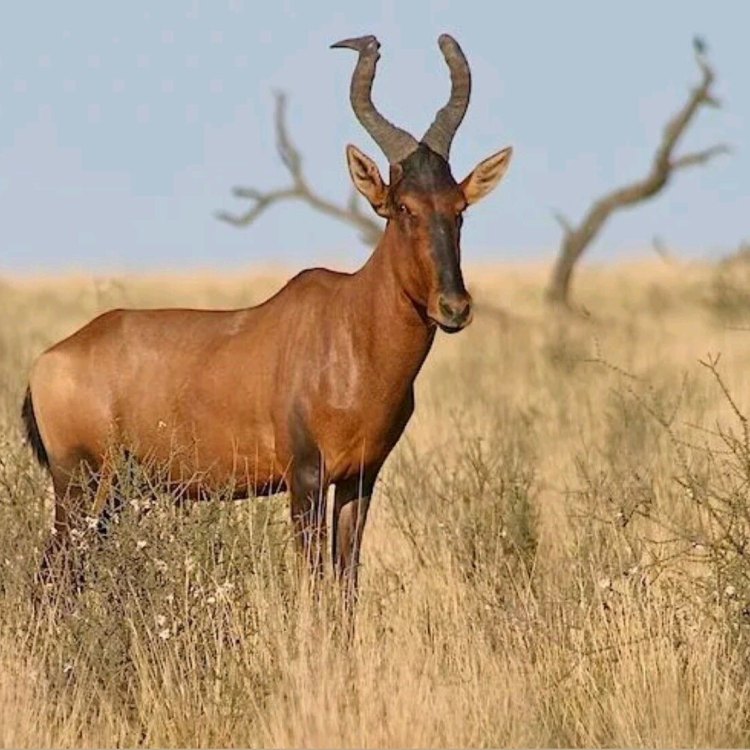
Alcelaphus buselaphus
The Majestic Hartebeest: An Iconic Species of the African Savanna
The vast plains of the African savanna are home to a diverse array of wildlife, each with its unique adaptations and behaviors. One of the most magnificent creatures that roam this iconic landscape is the hartebeest, a large antelope with distinctive features and intriguing behaviors. In this article, we will delve deeper into the world of the hartebeest and discover what makes them such a vital part of their ecosystem.A Magnificent Specimen
The hartebeest, also known as Alcelaphus buselaphus, is a species of antelope found in the grasslands, savannas, and open woodlands of Africa PeaceOfAnimals.Com. They have a large, muscular body with a distinctive long, narrow face. On average, they stand at 115 to 145 centimeters at the shoulder, making them one of the tallest antelope species. Their coat color varies from reddish-brown to a pale sandy color, with a whitish-colored belly and legs. However, the most striking feature of the hartebeest is their elongated, ringed horns, which can grow up to 45 centimeters.Reproduction and Social Behavior
Hartebeests are sexually reproducing animals, with females giving birth to a single calf after a gestation period of eight to nine months. They typically give birth during the rainy season, when food is abundant. Upon reaching sexual maturity, males engage in a polygynous mating system, where they mate with multiple females within their herd. However, competition for females can often lead to fierce fights between males, using their horns to battle for dominance.Hartebeests also exhibit social behaviors, with large herds forming, consisting of both males and females of different ages Housefly. This herd structure provides protection against predators and increases their chances of survival. Within the herd, there is a hierarchy, with the adult males at the top, followed by females and young ones. This social structure ensures the survival of the species, as it allows for cooperation and coordination in times of danger.
The Sounds of the Hartebeest
As diurnal animals, hartebeests are most active during the day, feeding on grasses, herbs, and leaves. However, they also communicate with each other through a variety of vocalizations. The most distinctive of these is their loud, snorting alarm call, which they use to warn other members of their herd of potential danger. They also use low grunts and snorts to communicate with each other, especially during mating season.Migratory Patterns
As with many other herbivores in the savanna, hartebeests are seasonal migrants, moving in search of food and water. During the dry season, as water and food become scarce, they travel long distances, following the rains and vegetation. As a result, their migratory patterns not only ensure their survival but also play a crucial role in shaping the landscape of the savanna.Threats and Conservation Status
Despite being considered a species of Least Concern by the International Union for Conservation of Nature (IUCN), hartebeests still face various threats to their survival. Habitat loss, primarily due to agriculture and urbanization, is one of the major challenges they face. Additionally, they are often hunted for their meat and considered competition for domestic livestock, leading to conflicts with local communities.To protect this magnificent species, conservation efforts are being made, primarily through protected areas and wildlife management practices. Some countries, such as Kenya, have even implemented community-based conservation programs that involve local communities in the management and protection of hartebeest populations.
Impact on the Ecosystem
The hartebeest may not be considered a flagship species, but their presence in the savanna plays a vital role in maintaining the balance of their ecosystem. As grazers, they feed on the vegetation, preventing overgrowth and promoting the growth of new plants. Their stomachs are also designed to digest tough and fibrous vegetation, which is essential to the recycling of nutrients in the soil. Additionally, they also act as seed dispersers, allowing for the growth of new plants and supporting the diversity of plant species in the savanna.The Human Use of Hartebeests
Unfortunately, humans have come to appreciate the hartebeest not only for its role in the ecosystem but also as a source of food and for hunting and tourism. Due to their impressive horns and large size, hartebeests are often the target of trophy hunters, leading to a decline in their population in some areas. However, when managed sustainably, hunting can also bring economic benefits to local communities and aid in the conservation efforts of this species.Fascinating Facts about Hartebeests
Apart from being important grazers and seed dispersers, hartebeests also have some unique characteristics that make them fascinating to study. For one, they are fast runners, capable of reaching speeds of up to 55 kilometers per hour. This allows them to escape predators such as lions, hyenas, and wild dogs, which are their main threats in the wild.Another interesting fact about hartebeests is their ability to swivel their ears independently, allowing them to detect sounds from different directions. This unique adaptation helps in their survival, as they can sense predators approaching them from any direction.
In Conclusion
In summary, the hartebeest may not be as well-known as some of the other iconic species of the African savanna, such as the elephant or lion. However, they play a vital role in their ecosystem and have unique adaptations and behaviors that make them a truly remarkable species. As humans continue to encroach on their habitat, it is crucial to understand and appreciate the value of these animals and strive to protect and conserve them for future generations to admire and learn from. So the next time you find yourself on a safari in the African savanna, keep an eye out for the majestic hartebeest and appreciate its role in this diverse and awe-inspiring ecosystem.
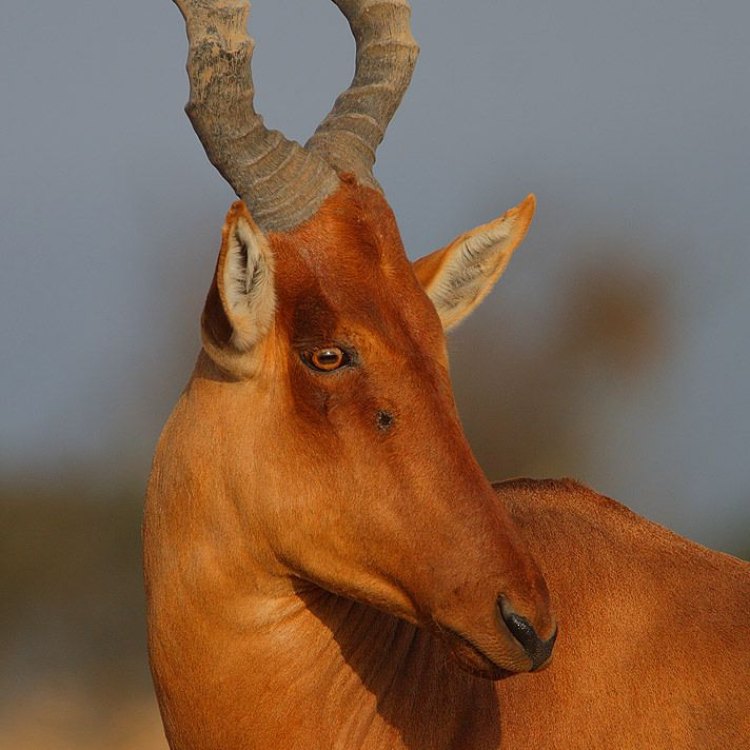
The Beautiful and Mighty Hartebeest of Africa
Disclaimer: The content provided is for informational purposes only. We cannot guarantee the accuracy of the information on this page 100%. All information provided here may change without prior notice.

